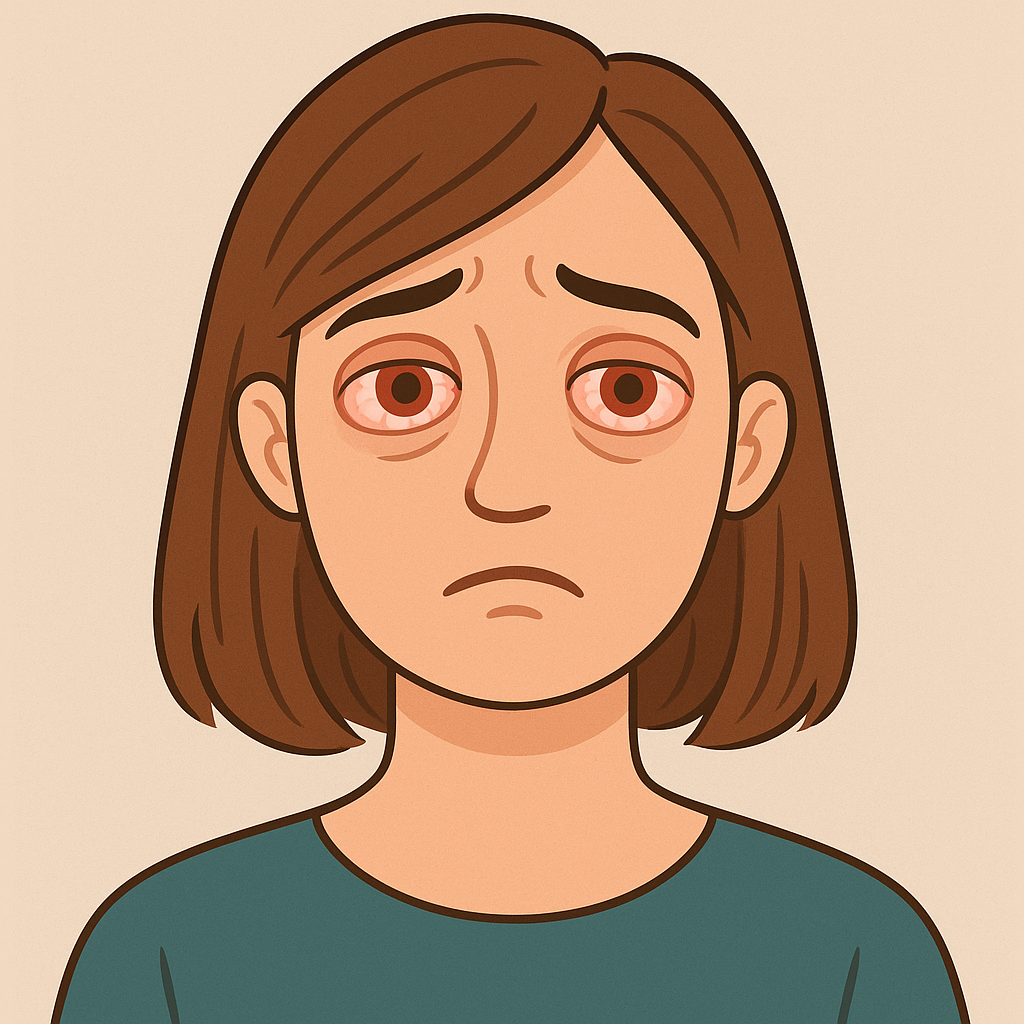Managing Double Vision from Thyroid Eye Disease


have already shared their stories
Double vision, or diplopia, is a common symptom of Thyroid Eye Disease (TED), caused by swelling and stiffness in the eye muscles. This condition prevents the eyes from moving in sync, leading to misalignment and blurred or overlapping vision. While double vision can sometimes improve as TED stabilizes, many patients require interventions to manage symptoms and restore clear vision.
What are your options?
Non-Surgical Options
If you are experiencing double vision due to TED, several non-surgical approaches may help:
- Prism Lenses: Special prism attachments can be added to your glasses to help realign images, making it easier for the brain to merge them into a single image.
- Eye Patches or Filters: Temporarily covering one eye can help eliminate double vision and provide relief while waiting for more permanent solutions.
- Steroid Treatments: Inflammation can worsen eye muscle function. Steroids may reduce swelling and improve eye movement in the active phase of TED.
Surgical and Injectable Treatments
If double vision persists after the active phase of TED, medical procedures may be necessary:
- Botox Injections: These can help relax stiff eye muscles, temporarily reducing misalignment and improving vision.
- Eye Muscle Surgery: If eye misalignment is severe, surgical adjustments to the muscles can help restore proper movement and coordination.
- Orbital Decompression Surgery: In some cases, double vision may improve after this procedure, which relieves pressure on the eyes by removing excess tissue and bone. However, additional eye muscle surgery may still be needed afterward.
When to Seek Treatment
Since TED-related double vision can have a significant impact on daily activities, it is important to discuss symptoms with a healthcare provider. Depending on the severity and progression of your condition, a combination of treatments may be required to achieve the best results.
Always consult your doctor before making decisive treatment decisions. The information here and on our app is for awareness and education, not medical advice.

have already shared their stories
Sources
British Thyroid Foundation. (n.d.). Thyroid Eye Disease (TED) Leaflet. Retrieved from https://www.btf-thyroid.org/thyroid-eye-disease-leaflet
British Thyroid Foundation. (n.d.). TED and Smoking: Information for Patients. Retrieved from https://www.btf-thyroid.org/ted-and-smoking-information-for-patients
University of Michigan Kellogg Eye Center. (n.d.). Thyroid Eye Disease: What to Expect. Retrieved from https://www.umkelloggeye.org/conditions-treatments/thyroid-eye-disease-what-expect
British Thyroid Foundation. (n.d.). Treatments for Thyroid Eye Disease. Retrieved from https://www.btf-thyroid.org/treatments-for-thyroid-eye-disease






